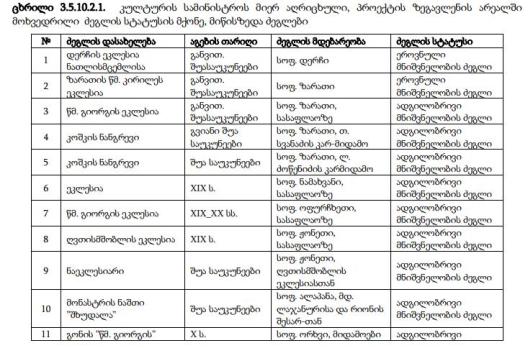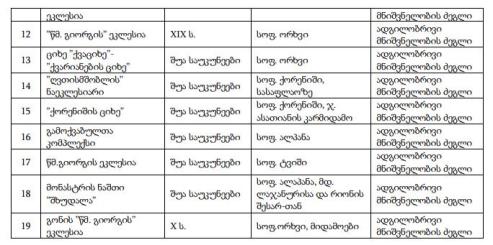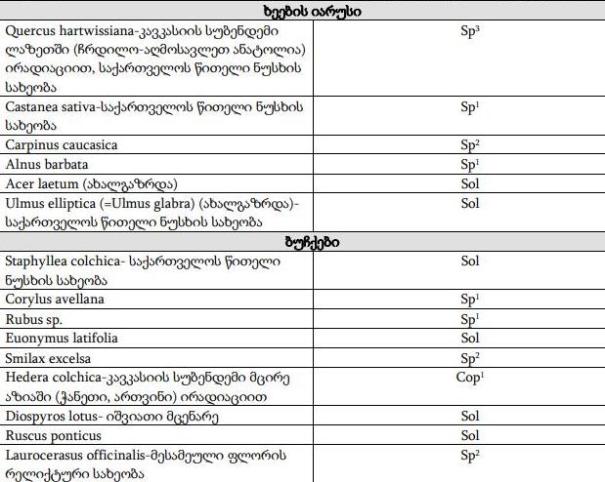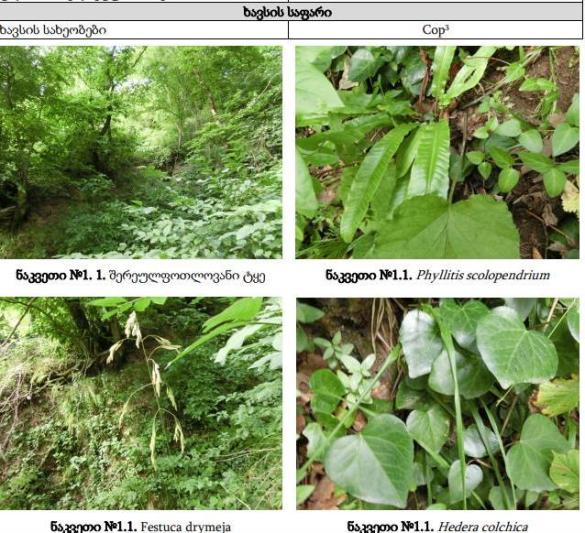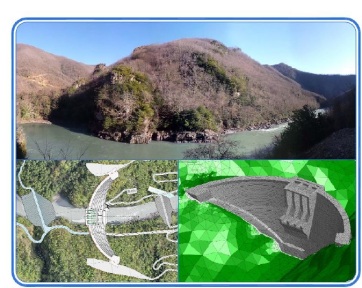
“Going out of the village is equal to my death, I will never leave my home even for the sake of thousands of money. “ Said 50-year-old Nino Suladze, the native of Namokvani, where is planned building of a new hydropower plant, in the canyon of Rioni. Adjoining village of Derchi can remain without the shrine. The only one XIV centuries’ church might be destroyed and disappeared.
If it is the first time when you are in the village of Derchi, it is impossible to find easily Derchi’s St.Ioane’s “invisible” Church. It looks like shrouded, hiding from the guests, it is located on the hillock, surrounded by mountains. After two hours of searching we saw a temple surfaced in a greenish wood torch, it has the only fenestra from the western wall and stands in the silence.
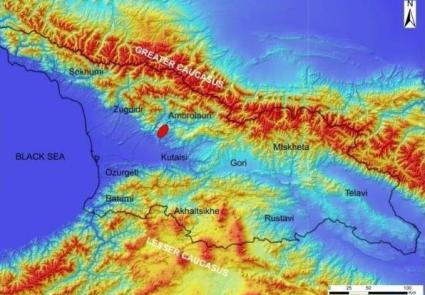
Indigenous people in Tskaltubo region are against the development of a planned 111-meters hydroelectric dam which threatens to evict them from their innate land. According to the Association “Green Alternative,” flooding threatens to 14 villages and the resettlement threatens to 104 families with 269 inhabitants. The project also endangers to the ecosystem, local forest, unique pieces of vine, including Khvanchkara, Tvishi, Usakhelauri, Cultural landscape, architectural samples, some of them belongs to the V-IV millennium B.C. Dam of Namokhvani is also dangerous for 19 monuments of cultural heritage and 14 churches including the Derchi’s temple of John the Baptist and St. Kvirike’s church in the village Zarati. Both of them are built in the middle ages.
There are some confronting outlooks. For example, the government position is that launching of a new HPP is profitable for Georgian Economy. According to the Ministry of Energy, The Installed capacity of the future project is 433 MW and average Annual Generation is 1514 GWh. 90% of the domestic demand for electricity is satisfied with the existing hydropower plants and the Authors of this project think that after the launch of the new HPPs this data will increase to 100% and building of Namokvani cascade is one extra step to achieve this goal.
“This project will make a pretty positive contribution to the country’s energy system and energy independence,” said hydroelectric engineer, project expert Gia Macharadze in the interview with “qronika+”, he noticed the extra benefits of Namokhvani HPP. Macharadze told that the power plant will generate 1.5 billion kWh energy and it is 15% of the total electricity in Georgia. So, this will be the step up to Georgia to become the energy exporter country. As he said, Georgia now makes imports, because deficits, especially in winter and this new hydropower plant will fill this gap and the country will not be dependent on neighboring anymore.
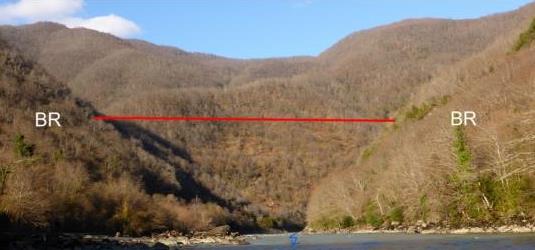
Gia Macharadze said for qronikaplius.ge that the residents should not have a reason for fear. He noticed that the investors’ huge experience is a guarantee of safety. “The standards and requirements mean that we consider all possible factors. The Caucasus is a high seismic zone, but the Enguri and Zhinvali dams are built there. There were earthquakes, but these dams are still safe. Enguri hydroelectric power has been functioning safely and reliably for 40 years.”
The chief of the investment company “Klein Energy Group” said also for “Qronika+” that information about the flooding of 14 villages is not true and as for the resettlement, it threatened only to 46 families.
“As for seismic hazards, the dam is building on the highest point of the earthquake in Georgia but in landslide areas, we studied the soil and we can conclude that a project in this zone will not create an additional threat.” Said Bure Branzeg, executive director of “Klean Energy Group.”
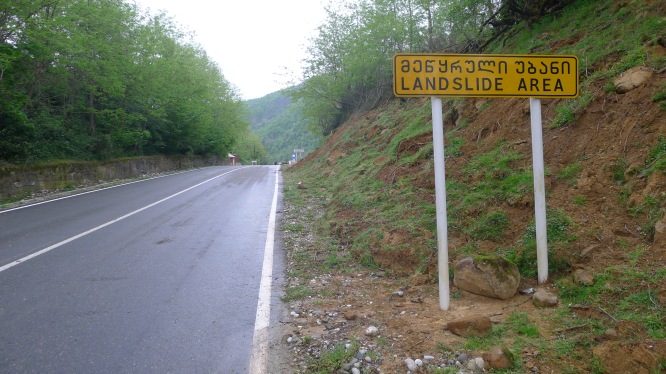
Local residents of Namokhvani say that they have so many questions about that project but no answers. Their main threats are landslides and unstable grounds. So, people near the Namokhvani are afraid of changes. 62-year-old Meri Miqautadze tells that she lives in Derchi for 15 years and remembers that landslides are the usual disaster, she noticed that the most of houses have cracked walls and nobody tell them what will be in future. As Miqautadze mentioned, the situation in Derchi is completely unknown for investors and authors of a project.
“There will be fog, wetness and what about creeping soil? It is hard to say, what will be in future. It worries us not to destroy rooms, which are totally cracked. There was a meeting with investors and they showed us potential threats in details but, nothing about us. They do not know what is happening here, that about 90 % of houses are amortized and cracked. I have written statement million times, but it doesn’t have a sense.”
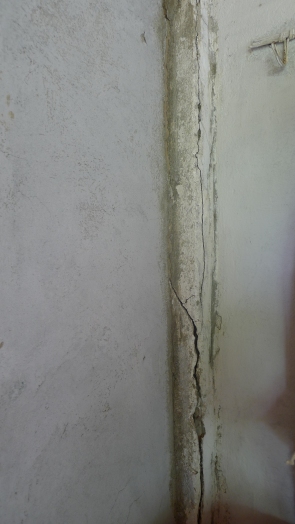
Meri Miqautadze lives next to the church of Derchi, sometimes she keeps the key of a temple, cleans the yard, waters the plants in the yard of it and prays here every week. So, she said that can’t imagine daily life without this church. “If the village will have any threats, of course, the church will have too. So, we are against this project. In the temple of Derchi prayers come from three villages. This church has unique frescos, we should care about them. Father Giorgi cares about us, so what can we do without this chapel?”
Another confusion is about the compensation for the village citizens. 72-year-old Marina Simsive told that it will be unfair if everyone has an equal compensation because some of them have the big yards and some of them not at all. “They have made a declaration of our property. Although, nobody promises anything and no one explains what will happen in the future, nor even how much money will be paid?”
The investor company answers to the residents that the project will create more benefits than threats. There was held information meeting between the authors and village citizens, the head of the company stressed that there will be built the construction of a bridge between the village Derchi and the road of the tunnel will be arranged at the village Tvishi. Bure said that because of Namokhvani’s HPP it will be possible to control the water stream from Kutaisi and it will be kind a prevention mechanism to avoid the floods. He also mentioned the benefit of employment and reduced prices.
“Living standards of locals will improve, new jobs will be created, and 3,000 people will be employed directly during the project. Also, it is not ruled out that the price of electricity will be reduced in the future.” noticed Bure Branzeg.
The development will occupy 500 hectares (5 square miles) of land among the Rioni River in Tskaltubo Region. It will involve the construction of a powerhouse, 4.4 km tunnel, a reservoir, 4 turbines, generators, transformers and the laying of transmission lines. The project has met with resistance from indigenous peoples who refuse to sell their lands. Although the building of a new hydropower plant is already licensed, working will start in 9 months. As for the production of electricity, it is planned due to 2022, after water reservoirs will be ready to work.
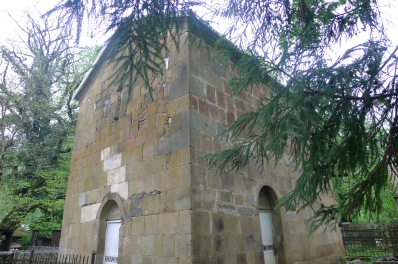
The threat of destroying the church is also worrying for the residents of Zarati, where is located the church of St. Kirile. The ring doesn’t sound every week and the door of God’s house is not often every time, Although, prayers try to keep the church as an active because not to be forgotten. As people can remind, this church was burned by Georgia’s enemies and still, the damaged frescos are not renovated. So, the Dam of Namokhvani can be the second enemy to annihilate this temple. 80-year-old Natasha Chelidze tells about feelings and opinions of locals, she thinks that protest is always a good choice and they should try to change something.
“At the time of conquering by Persia, this church was burned and the traces are left, the walls are still gobbled up. The Georgian people defended the church from enemies, but now we are destroying it by ourselves. There were mines and now the land is broken up, so the danger is clear. I am against the building, Of course, electricity is necessary but if it will wash away our soils, why do we need it?”
In 2015 Ministry of environmental protection and agricultural of Georgia has issued a positive conclusion about environmental impact statement. Although apart from the population, some representatives of NGO’s are against the construction of the hydropower plant. According to the “Green Alternative”, the environmental impact report is formally written, it is drawn up poorly and does not reflect the real threats. As “Green Alternative” mentioned, the impact on the unique breeds of grapes should be noted separately. The special variety of grapes is in the project area.
„This report is made simply to obtain a symbolic permission. Even the investor who pays money on this environmental impact assessment report does not read it. The damage should be counted in numbers. We are not talking about one or two trees, we are talking about 600 hectares of land and the massifs of forests, also about undamaged trees of boxwood.” Said Dato Chipashvili, the monitoring coordinator of “green alternative.”
Public defender’s Office also had complains against official structures. Ombudsman thinks that decisions made by state agencies regarding construction of hydropower plants are not transparent. “Decisions should be made to ensure that the public is informed. There was not the engagement of residents, also there was not described the socio-economic needs of the population and the long-term benefits or proportion of harm.” mentioned the ombudsman office.
The executive director of investor company “Power Energy Group” told to qronikaplus.ge that they agreed with the government’s main conclusion that this project does not have any risk. “We hire experts with the best international experience and rely on their conclusions. For example, we hired the company “Stuttkle,” a leading Swiss hydropower company.” Said Bureau.
Priest of the church says that none from the authors of the project had an idea to talk with him to explain real threats and preventing steps. Father Giorgi who leads the liturgies here for 16 years tells that he can’t protest this project by street demonstrations, but he is ready to help the locals in any way. “Nobody is supporting, to my mind, the only one reason why some citizens want to be built this Dam is the desire of working, because of horrible social conditions, citizens want to be employed and they can’t concern about the ecosystem. I feel that besides the God nobody can help us in such a bad situation.”
According to the Ministry of Energy of Georgia, There are 13 licensees and 25 low-capacity power-plants in Georgia. As for the total installed capacity, they generate around 3300 MW and the average annual output equals to 10 bln KWh. Based on the Energy Policy of Georgia “The maximum utilization of the abundant hydro-resources is one of the priorities of the state. The main objective of the long-run energy policy is the attraction of foreign investments for the construction of the new power plants.”
As for the development history of Namokhvani cascade, the first project was drafted in the 1930s and the project design was developed in 1980s in Soviet Georgia. The project was reviewed in 2007-2011. Finally, in 2014 new plan was created. According to the Ministry of Energy, the total cost of a project is $738 million and generated electricity will remain in Georgia. The development of the HPP of Namokhvani may be the biggest Norwegian plant abroad, Branzeg told it for Norway Today.
Canyon of the river Rioni is shared by Different villages with different types of people, but all of them have the similar daily life. Usually, they have farms, bees, cultivate the lands, vines. They also share the same feelings, worries, and concerns. 50-year-old Nino Suladze notices that her house was totally burned, but after surviving she decided to build a new one and stay in the village, she is against the hydropower plant.
“If this beauty is disappeared where should I go? I have a house in the city but I have never lived there. I loved the place where I was born, clean, healthy air, unique nature, where is the better place to live? There was a meeting with businessmen who had some suggestions for us but I boycotted them. Going out of the village is equal to my death. I will never leave my home even for the sake of thousands of money.” Said Nino Suladze from Namokhvani.
“I will get my voice to the God and ask not to allow this tragedy of Namokhvani,” “I am still here to keep the village as alive, I am happy that my home fire still burns in Namokhvani,” “I prefer to swim in our rivers than in a dirty sea, this area is the part of my life.” These quotes are collected from the Namokhvani, it is easy to guess what would be the answers if the investors will suggest them to leave the place instead of compensation. In advance, the locals say that there is no chance to leave the village or agree with that project.
